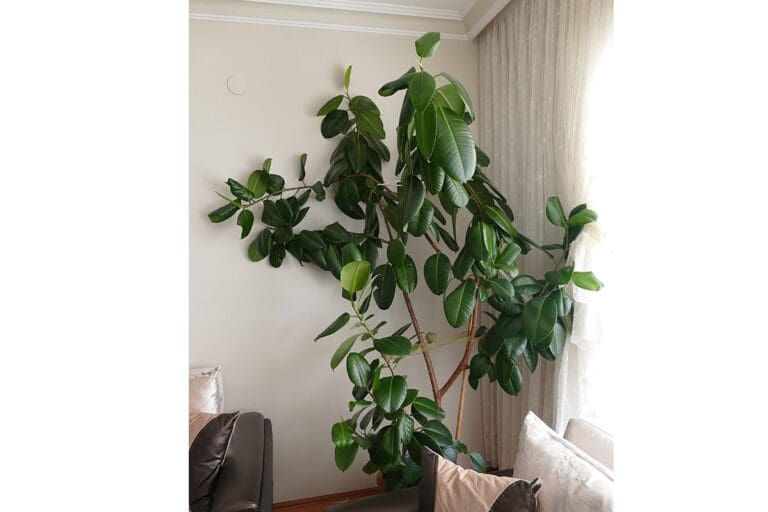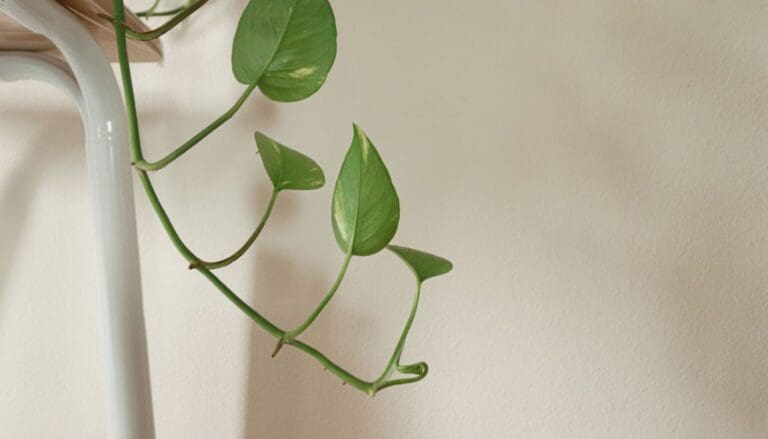Why Is My Monstera Not Growing? (9 Causes+What To Do)
Monsteras are considered to be the trendiest indoor plant that you can easily grow these days. However, not everyone has success in growing monstera successfully. Some people often wonder why is their monstera not growing. Here is what you need to know about it.
Inadequate fertilizing, underwatering, pests infestation, and low humidity are some of the reasons for stunted growth in your monstera plant. These problems often stress the plant leading to slow growth. Droopy leaves and yellow leaves are signs that your monstera is unhappy.
Since you are already stressed with your monsteras not growing, we want you to look upon the possible causes of this condition.
We have given all details concerning the causes and treatment of monstera’s stunted growth in this article.
We have made it simple for you to identify the precise cause rather than wonder why your monstera are not growing.
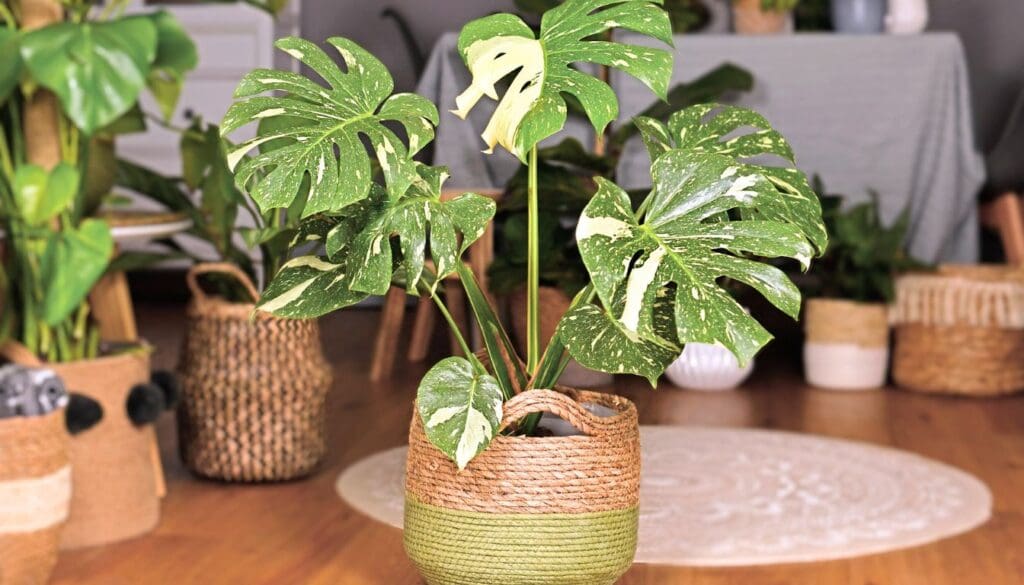
Please note: Simplify Plants is reader-supported. Some links in the post are affiliate links and I get a commission from purchases made through links in the post.
How long does it take a Monstera to grow?
Monsteras can grow up to 2 feet per year, provided they have access to proper light and water. If they are appropriately nurtured, they can produce new leaves every month.
The frequency of the growth of monstera depends on you and not them. They just crave some attention.
It’s you who can enable them to grow quickly and vigorously. The bigger your monstera gets, the more foliage production they have.
They spread in width naturally than growing tall, so don’t be stressed when you see your monsteras bushier rather than tall.
TIP: If your pocket is tight, bushier monsteras will give you more chances to have more cutting to grow more monstera without having a hole in your pocket.
My monstera is not growing
There can be various reason that is causing stunted growth in your monstera plant. Let’s go through each of them, so you can determine the problems with your monstera and fix them immediately.
Your monsteras are not getting enough light

Light is a crucial factor in growing monstera. They need light to be used in the metabolic process. In this process, monstera convert water, oxygen, and light into carbohydrates using light energy.
We have prepared a table about which direction gives you what kind of light intensity to help you decide the right spot for your plant.
| Direction | Location and light intensity |
| East | –Within 4-5 feet for the bright indirect sun. –For the cool morning sun. |
| West | –Within 4-5 feet for the bright indirect sun. |
| South | –Within 2 feet for direct sun. –Within 3-5 feet for the bright indirect sun. –More than 6 feet away for shady light. |
| North | –For medium to low light intensity. |
The amount of light, the intensity of light, and the spectrum are the three factors of light controlling monsteras growth. If you maintain the right balance in them, you will never go wrong.
In the case of monstera, you might either not be giving them enough light to produce ample energy to maintain and boost new growth.
They will survive in dark corners with low and shabby light, but if you want growth out of them in such conditions, then it isn’t easy.
With low light, monsteras will not generate enough chlorophyll to have green and variegated leaves. This is a sign of low light conditions.
We don’t mean you put them in a spot with direct sun touch for more than 2 hours at max. This will moreover burn their leaves and also affect other are routines you are already providing them.
Also read: How much light do monstera need?
The humidity level is not ideal

While growing monsteras indoors, some people encounter a significant issue with ideal humidity maintenance.
Monsteras are native to the tropics, so they cannot remain happy or thrive in low humidity levels.
Low humidity reduces the moisture in the leaves and makes them dry. In the long term, it affects the whole plant making them dry, which even watering can’t fulfill.
Due to central heating or other heating systems, any humidity left in the air also wiped out.
Relatively humidity is an important term for measurement used for moisture. If you want to learn more about humidity measurement, here we have complete details:
- 80%-90% – This is tropical weather that mostly greenhouse can reach. 90% almost feels like rain.
- 60%-80% – Ideal level for tropical plants, not easy to maintain. Sensitive plants may need a level of more than 70%
- 40%-60% – Most households are at this level during hot weather. The majority of the plant can thrive at this level. Misting is recommended for some assistance.
- 10%-40% – Very dry air primarily due to heating systems being used. Most of the plants are going to fight for their life in this condition.
So, you know now what humidity level your monsteras need to thrive best and to have a steady growth.
Also read: Should I mist my monstera?
Growing at the wrong time of the year

Monsteras thrive in summers as compared to winters. If you expect mangos in winters, it’s next to impossible. In the same way, expecting growth at the incorrect time will not give you any results.
Growing season by the name only means the period of growth. Monsteras will grow during spring through summers (the growing seasons) with decent care.
If you are fulfilling your monsteras’ requirements, and still not seeing any growth, check what time of year it is.
Even if you fertilize or water your monsteras more during dormant seasons, they will not give you any results. Instead, you will find fungal diseases and other leaf-related issues due to overfeeding.
This is the time for your monstera to rest, rest in growth, and rest with food too.
During the winter months, they don’t even get enough light to produce enough energy to function effectively and fast. They just need minimal care to maintain their health.
Be patient till the dormant season passes to see any new growth in your monstera.
You are under-watering your monstera.
Underwatering is one of the primary reasons for the slow or stunted growth of monstera. Monsteras are designed to grow on the grounds, and mother nature takes their proper care.
When hobbyists decide to keep them indoors, they tend to mess up with their needs. Planters either overwater or underwater their monstera. Watering comes first.
Monsteras, as you might know, can thrive in underwatering. But if you are one of those planters always overlooking to water them on time, keeping the soil bone dry for long intervals, then you are pushing your plant to the point they will stop the growth and die.
Water is essential for different functions, and to keep monsteras leaves shining and healthy. Due to prolonged under watering, they leave droop, turn yellow, brown these are a few of the initial signs.
There comes a time when your stressed monstera has used all their water reserves to maintain their health and shut their functions internally. Now they will have either slow growth or no growth at all.
If you feel you are watering correctly, then you should check the roots and soil of your monstera. The roots might have grown dense, stressing the plant, making it harder for the soil to consume water and nutrients.
It could be the soil mix causing under watering conditions; it might be sandy, which drains really quickly and doesn’t hold moisture long enough. The soil is not able to store and retain sufficient water, making the whole plant dehydrated.
Also read: How often should you water your monstera plant?
Lack of nutrients in the soil

Fertilizers provide the plant with those essential vitamins that plants need to thrive. Monsteras need micro and macronutrients to have optimal growth.
Monsteras were grown in the wild, where they get their nutrients from the soil itself.
Growing indoors, they have limited space, a limited amount of soil in the pot, and little nutrients that they use up within a few months.
Fertilizers can be regarded as multivitamins for your plant. They need to be added to the soil in the form of fertilizer from time to time.
If the plant lacks these nutrients, it will stop showing any growth. Even if they get proper light and water, they still need these supplements to have considerable growth.
All of these elements work together. You cannot cut down one and give the other 2 in abundance and expect optimal growth.
If your monstera has stunted growth, check on your fertilizing routine.
There are chances that you might have cut down on their fertilizer needs during their growing season, and in the dormant period, you are expecting your monstera to put out new leaves.
During dormant seasons monstera won’t show much growth, and if they have not been provided with nutrients at the right time, it’s hard to see any growth. Instead, you will see other issues due to weak plants.
Fertilizers are made of micronutrients and macronutrients.
Micronutrients are mobile nutrients present in large quantities in fertilizer.
Macronutrients are elements that plants need in smaller amounts. These micro and macronutrients consist of:
| Macronutrients | Micronutrients |
| Nitrogen | Boron |
| Potassium | Copper |
| Phosphorous | Iron |
| Calcium | Molybdenum |
| Magnesium | Chlorine |
| Sulfur | Zinc |
| Manganese |
Also read: Do monstera need fertilizer? How much and how often?
Growing monstera in the wrong soil type
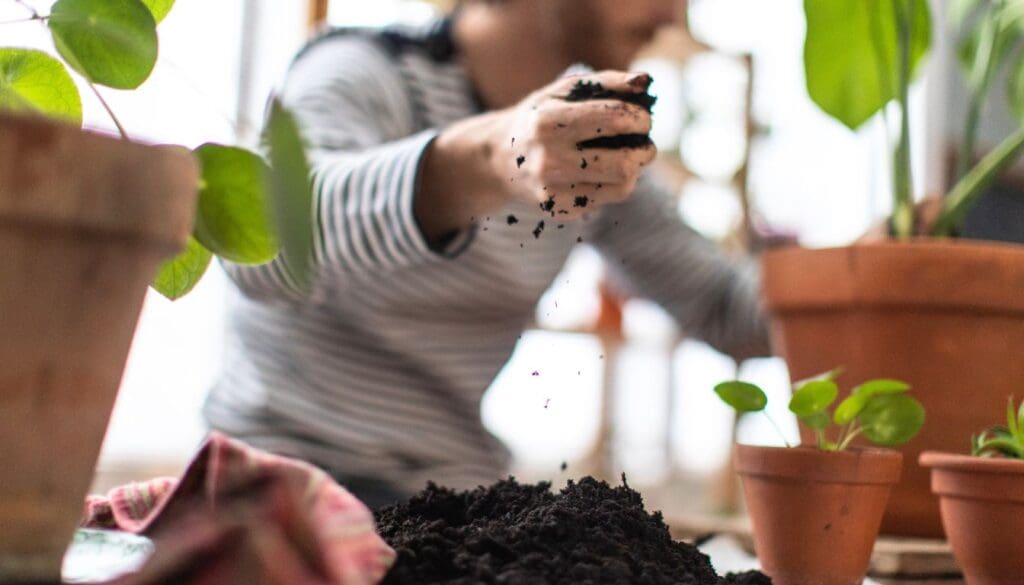
Role: The growing medium is a crucial part of any plant. It is the first factor that provides your plant with nutrients. Since the container restricts roots, proper soil mix plays an important role here. The right soil mix allows root aeration, drains excess water, and admits aeration.
Cause: There are chances that your soil mix is either not aerated or inadequate draining. In both cases, your monstera will suffer.
Heavy soil: In the case of heavy soil mix, your soil does allow drainage of extra water that also affects the roots’ oxygen flow. This kind of soil structure becomes compressed with time, and plants grow poorly in such soil.
The plant will lack water, air, and the required nutrients essential for consistent growth.
Garden soil is considered ideal, but they are not. They become very hard after a few months of potting them, resulting in yellow leaves and leading to wilting of your plant.
Extra draining soil: If your soil mix is not heavy, then there are chances they are extremely draining soil. That means they are extremely porous to the point that they can’t retain water and nutrients at all or in a tiny amount.
Such a potting mix will keep the roots, soil, and plant dehydrated and weak most of the time.
Your monstera in such conditions cannot persist for too long, and if you see stunted growth, they have come a long way battling such a situation.
Repotting again and again
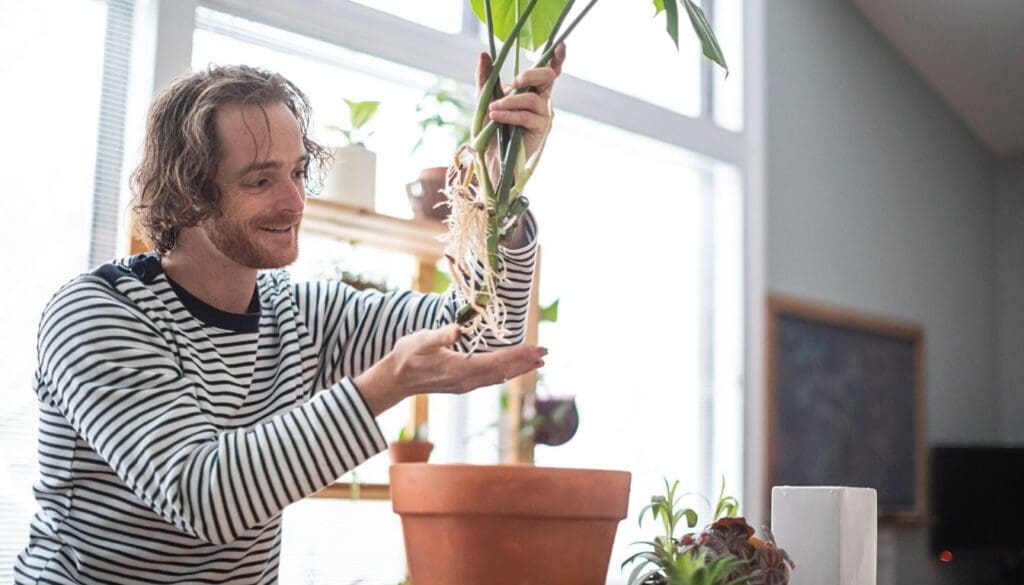
Monsteras are sturdy plants and grow extensive roots. Many beginners make a mistake by repotting them every time they see the slightest growth in their monstera.
Frequent repotting stresses monstera. The roots will lack needed nutrients making them weak and vulnerable. They get easily susceptible to diseases, pests, and other leaf-related issues.
They lack the essential nutrients required for their growth and will not be able to put out new growth for quite a long time after repotting. If this is your case, then set back and let your monstera live in their existing pot.
Don’t repot every time you sense or see something kosher in your monsteras. Try to fix it by monitoring what they lack or need. Ideally, you should keep a gap of 1-2 years before repotting your monstera plant.
Pests infestation on monstera
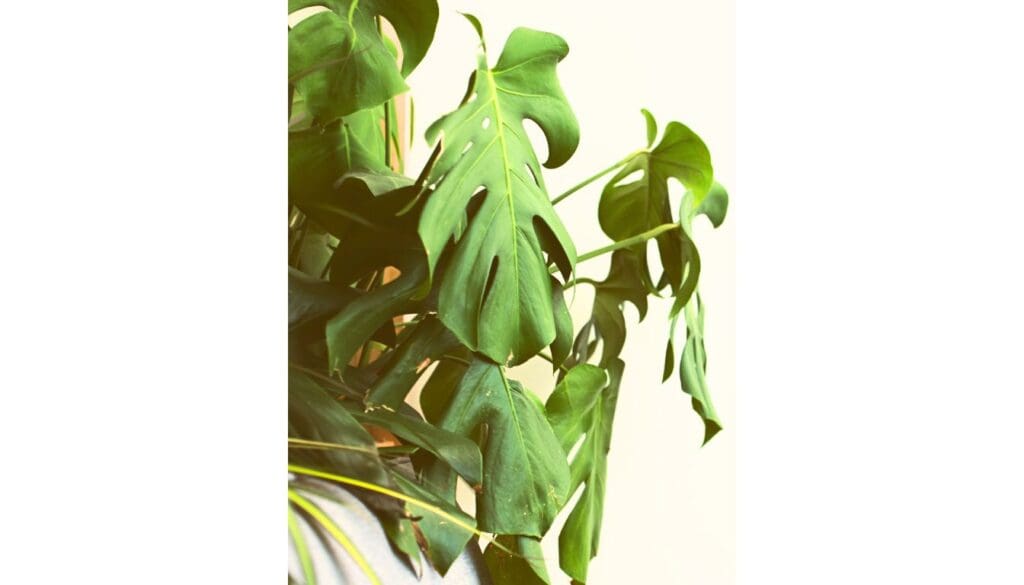
Pests attack could be an inherent reason for your monsteras stunted growth.
If you have to take care of all that your monstera needs or have gone through the above-discussed causes and find out they are not the root culprit.
Pests could be that culprit ruining your monsteras health and growth.
You must have heard common and irritating pest’s names:
- Common brown scale
- Mealybugs
- Aphids
- Fungus gnats
- Thrips
- Common whitefly
- Red spider mites
These common pests make your plant their daily snack and such out the sap from monsteras leaves and stem, resulting in several issues.
They are so tiny that you might oversee them through daily care routines.
Pests make plants weak, affecting them internally and resulting in stunted growth.
Your monstera plant will start to tell you that they are unhealthy through:
- Yellow leaves
- Brown leaves
- Discoloration
- Distorted leaves and stem
- Brown, white spots on leaves
- No new growth
Keep an eye on pests while caring for your monster.
Also Read: Does Monstera Attract Bugs? (+How To Get Rid Of Them)
Your monstera is stressed

Monsteras are hardy plants, and harsh conditions cannot bother them for a long time. They will survive but might not show much growth.
Stressed monsteras try to communicate with their parents with all the signs they can give, such as:
- Leaf drop
- Drooping leaves
- Wilting leaves
- Yellow leaves
- Stretching
- Brown leaf and tips
- Salt buildups
Each sign has various causes behind them, your monsteras trying to quote.
Overfertilization or too little water could be the reason for brown leaf or brown leaf tips, salt buildups. Over-fertilizing may boost growth, initially making your monsteras weak in the long term.
Low light also stresses monstera as they stretch themselves towards all possible light sources they could find. Due to low light plants, other functions also suffer.
Underwatering leads to droopy, wilted leaves, and leaf drops. They snatch away the shine and luster from your monsteras leaves.
Over or under watering, over or under fertilizing, low light, or too much light, temperature shifts are all potential reasons to slow the growth of your monsteras.
All the above-discussed signs are initial signs of distress to make you understand when to take action.
As soon as you see such signs or sense something kosher, you immediately need to check on your monstera for the exact cause of stress.
How do you encourage Monstera’s growth?

We wanted you to know the real cause of your monsteras stunted growth; this will make these steps easier. There is nothing known as a quick fix in terms of houseplants.
So, I hope you have identified the problem with your monstera. Now let’s quickly have a look at some fixes.
To fix and see your monstera growing again, you have to be patient and gentle with them. Don’t further stress them by overdoing the treatment to see fast growth.
Please go through all the steps and thoroughly inspect your monstera to understand what they lack or are stressed with.
Lighting: Light issues can be easily corrected by moving the plant to the right spot. Place your monstera in moderate light, such as 4-5 feet from a sunny window or near a shaded window or a window covered with a sheer curtain.
You should make sure that your monstera doesn’t get caught by the direct sun for more than 2 hours. Give it refined light all day long, and it will grow like monsters.
Hobbyists, whose home doesn’t have a great light source shouldn’t despair. Go for artificial light sources such as grow lights, LED lights, and lamps. Make sure the intensity of light should be regulated according to your monsteras needs.
Humidity: Simple, practical methods can quickly raise humidity:
- Misting: Raise humidity by only misting in the air and all over the plant. For better outcomes, it should be repeated several times a day. This will keep the air moist most of the time. Although misting doesn’t help a lot, but it does its bit.
- Grouping plants: You can also raise humidity levels by grouping moisture-loving plants. They make a forest-like environment by raising moisture in the atmosphere. Also, maintain some space between each of the plants.
- Pebble Trays: You may use a humidity tray for your monstera readily available in the market. You can also make your own pebble tray. Put pebbles on a tray and pour water to a level the roots don’t touch the water.
- Humidifier: Humidifier is a great option to raise the humidity in the room. They can be controlled according to the need for the humidity in the air. By far, these are most effective in raising humidity levels.
Growing season: Always let your monstera plant rest in the dormant period. They will grow throughout spring and summer.
Planting or repotting should be done, preferably in the growing season, to have bushier monstera.
If you plant or repot your monsteras in the dormant period, you will hardly notice any growth.
Watering: Most proper way to water monsteras or any plant is to water thoroughly and let the excess water drain out entirely through the drainage holes.
Before watering your monsteras during any time of the year in any condition, always check the soil condition.
By pushing a finger 2-3 inches in the soil from the top, you can check the soil’s moistness. If the soil is dry, water them immediately. They like to dry out to about 75% before the next watering.

Fertilizing: Sufficient nutrients are vital for the growth of your monsteras. They help the plant to use soil nutrients during photosynthesis.
You can buy natural or synthetic fertilizers readily available in the market.
You can also make your compost with kitchen scraps. Do not overdo any fertilizer, be it natural or synthetic, that can harm your monsteras more than help them.
The best formulation of fertilizer for your monsteras is 20:20:20, i.e., equal parts of nitrogen, phosphorus, and potassium to support their massive foliage and boost growth.
Dosage should be half the strength recommended in the package by diluting it with water.
Soil mix: Ideal soil mix is the one that retains oxygen and moisture, yet drains well water. To improve your soil mix, add sand or perlite to improve the flow of air and water.
To retain water, use clay, or organic matter. Such soil mix, in addition to fertilizers, will maintain and provide sufficient nutrients to your monsteras.
We have made it easy for you with some soil mix options according to your choice.
- 1/2 potting soil, 1/2 coco fiber, or peat moss
- 3/4 potting soil, 1/4 pumice or perlite
- 1/2 potting soil, 1/2 orchid bark or coco chips
Repotting: Repotting monstera should ideally be done when you see the roots growing out of the bottom of every 2-3 years.
The roots of monsteras will still function well in constricted situations, but they work well and supply water and nutrients more efficiently when provided with ample space.
Pests: Pests are irritating and stubborn and will give you a hard time while treating them. We don’t want you to harm your monstera in the process of treating these pests.
Treat them naturally as we prefer,
- Neem oil
- Pyrethrum spray
- Rubbing alcohol
- Pepper spray
- Herbal water spray
- Garlic
- Nicotine
You can use any of the above options to treat your plant. The key is to repeat spraying the solution every 3-4 days to control the pests.
You can also opt for chemical ways such as insecticides or fungicides available out there, and use as prescribed.

Reducing stress: When stressed, your monstera need you; they need you to understand and listen to them.
In such a situation, take some time with your monstera to identify the stress caused and work slowly on repairing the condition.
Let’s say they don’t get enough light. In this case, please don’t put them in direct sunlight or light for all day long in one go.
Expose them to light by progressing a few hours each day to save them from any shock or stress.
Also read: How to grow houseplants faster?
Source: Anthracnose disease of Swiss cheese plant, Monstera Growing in the Florida Home Landscape, Monstera Growing, Monstera, Indoor Plant Care.
Recommended Garden Supplies
| Product Image | Our Recommended Gardening Supplies | Check Offers! |
|---|---|---|
Top Top
Top
Top
Top
Top
Top
Top
Top | rePotme Houseplant and Tropical Classic Potting Soil Mix | Check Offer On Amazon |
 Top
Top
Top
Top
Top
Top
Top
Top | Espoma Organic Indoor Plant Food | Check Offer On Amazon |
 Top
Top
Top
Top
Top
Top
Top
Top | GooingTop LED Grow Light 6000K Full Spectrum Clip Plant Growing Lamp | Check Offer On Amazon |
 Top
Top
Top
Top
Top
Top
Top
Top | Soil Moisture Meter | Check Offer On Amazon |
 Top
Top
Top
Top
Top
Top
Top
Top | Govee Hygrometer Thermometer, Bluetooth Enabled! | Check Offer On Amazon |
 Top
Top | LEVOIT Humidifiers for Large Room(Best For Plants) | Check Offer On Amazon |
 Top
Top
Top
Top
Top
Top
Top
Top | Upgraded DIY Automatic Drip Irrigation Kit, 15 Potted Houseplants Support | Check Offer On Amazon |
 Top
Top
Top
Top
Top
Top
Top
Top | Stainless Steel Heavy Duty Gardening Tool Set | Check Offer On Amazon |
 Top
Top
Top
Top
Top
Top
Top
Top | Bonide Insecticidal Soap | Check Offer On Amazon |
 Top
Top
Top
Top
Top
Top
Top
Top | Bonide 32 oz Spray Neem Oil for Organic Gardening | Check Offer On Amazon |
 Top
Top
Top
Top
Top
Top
Top
Top | Garden Safe Fungicide | Check Offer On Amazon |




